CNN (U.S.) has released satellite images showing six rivers around the world drying up due to extreme weather conditions.
Satellite Images of Drought-Stricken Rivers Worldwide
People often say, “Stuck on a river without a paddle” to describe a difficult situation with no way out. However, if that river is in the Northern Hemisphere this summer, even a paddle would be of little help.
Severe drought conditions and relentless heatwaves are draining rivers in the U.S., Europe, Asia, and the Middle East. Many rivers are shrinking in both length and width, with stretches of riverbed emerging above the water, becoming a “new normal.” Some rivers are even drying up completely.
The human-induced climate crisis is exacerbating extreme weather globally, impacting not only the rivers but also the people who rely on them.
Most of the planet’s population depends on rivers to some extent, whether for drinking water, irrigation, energy, or transportation of goods.
CNN has released images from space of six such rivers.
Colorado River
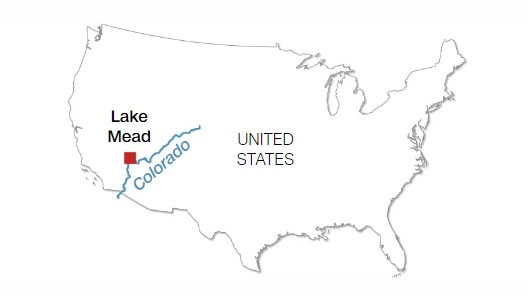
The Colorado River is gradually drying up amid a historic drought in the western United States that shows no signs of easing. This river is sustained by two of the largest reservoirs in the U.S., and to protect the river basin, the U.S. government has implemented mandatory water cuts and required states to develop additional action plans.
One of those reservoirs, Lake Mead, is shrinking as water levels drop to “dead pool” status.
“Dead pool” means the reservoir will not have enough water to release downstream through a dam.
Lake Mead’s water levels have been declining since 2000, but the drop has accelerated since 2020.
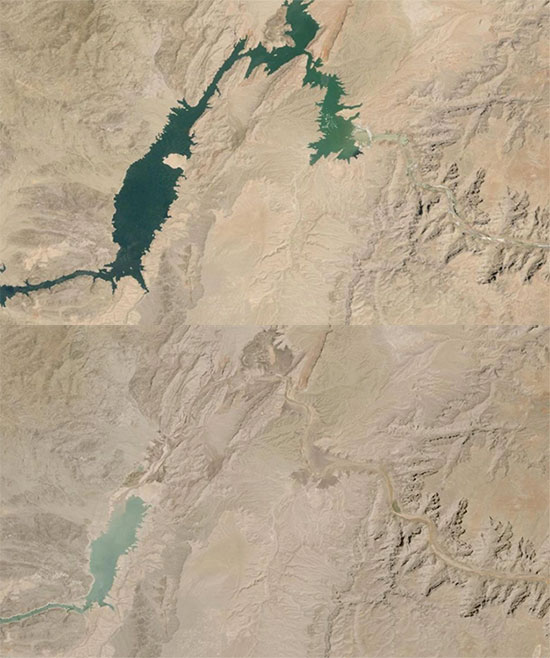
Colorado River in 2000 (top) and 2022 (bottom). (Photo: CNN).
The water level has dropped so low that a disturbing discovery was made last year, including human remains found in a barrel, believed to be the victim of a domestic violence incident from decades ago.
The water crisis of the Colorado River poses a significant risk to approximately 40 million people in seven U.S. states and Mexico, who rely on the river’s water for their livelihoods, agriculture, and electricity generation.
Yangtze River
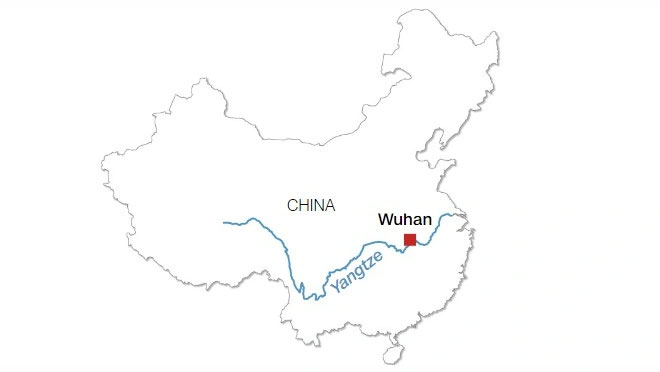
The Yangtze River in China is drying up, with riverbeds rising in some areas. Many tributaries of this longest river in the world are experiencing severe drought. China has issued a national drought warning for the first time in nine years and is facing its longest heatwave in six decades.
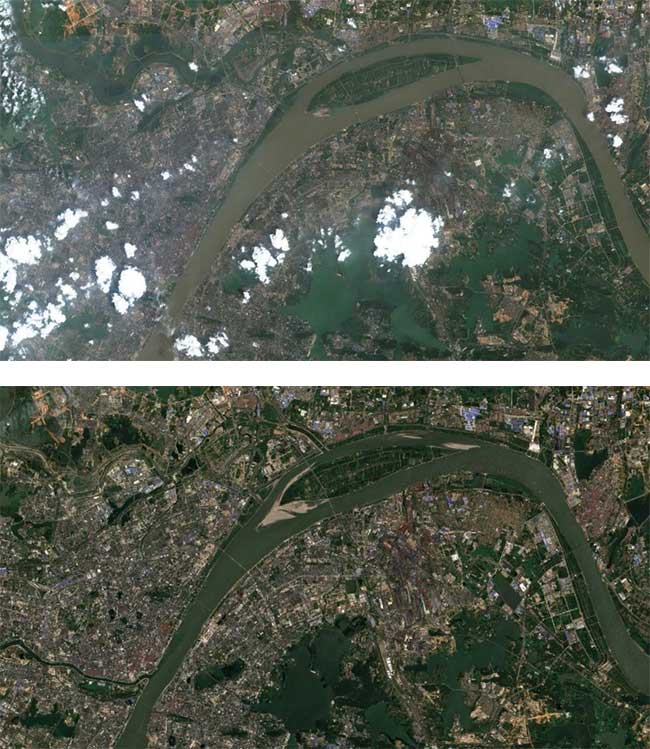
Yangtze River in 2021 (top) and 2022 (bottom). (Photo: CNN).
The impact of the declining water levels in the Yangtze River is alarming. In Sichuan, a province with 84 million people, hydropower accounts for about 80% of the electricity capacity, largely sourced from the Yangtze River. As its flow slows, electricity production has gradually decreased, forcing local authorities to order the shutdown of all power plants for six days.
According to China’s Xinhua News Agency, Sichuan is experiencing rainfall at only half of the normal levels, and some reservoirs have completely dried up.
Rhine River

The Rhine River originates in the Swiss Alps, flows through Germany and the Netherlands, and empties into the North Sea. It is a vital waterway for European transport, but currently, this waterway is becoming a nightmare.
Many stretches of the riverbed have risen above the water’s surface, meaning that ships attempting to navigate this river must overcome a series of obstacles, causing delays in transit times.
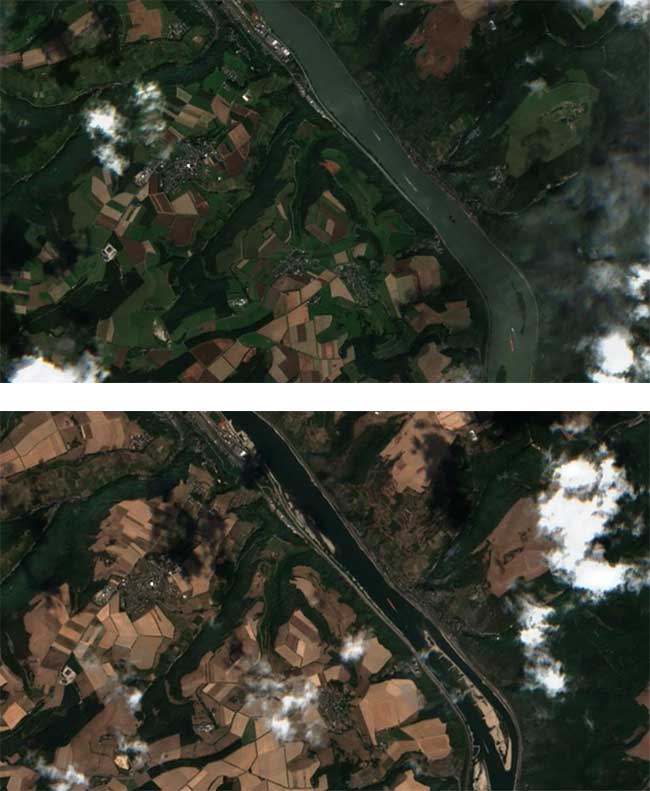
Rhine River in 2021 (top) and 2022 (bottom). (Photo: CNN).
The Rhine River has varying water levels along its length. At Kaub, just west of Frankfurt, Germany, the water level has dropped to as low as 32 cm.
For shipping companies, a water level below 40 cm on the Rhine is considered too low, and at Kaub, a level below 75 cm means container ships must reduce their cargo by about 30%, according to economists at Deutsche Bank.
Low water levels make shipping costs more expensive, which ultimately impacts consumers.
Po River

The Po River flows through northern Italy and eastward into the Adriatic Sea. It is nourished by winter snow in the Alps and heavy rainfall in spring. Typically, severe flooding is the most pressing issue for this river.
However, the Po River now looks very different. The winter in northern Italy has been dry, leading to a lack of snow as a water source, and both spring and summer have been dry, plunging the region into the worst drought in seven decades. The river has dried up so much that a World War II bomb was recently discovered.

Po River in 2021 (top) and 2022 (bottom). (Photo: CNN).
Another concerning issue is that millions of people rely on the Po River for their livelihoods, primarily farmers.
About 30% of Italy’s food is produced along the Po River, and some of the country’s most famous export items, such as Parmesan cheese, are also produced here.
Loire River
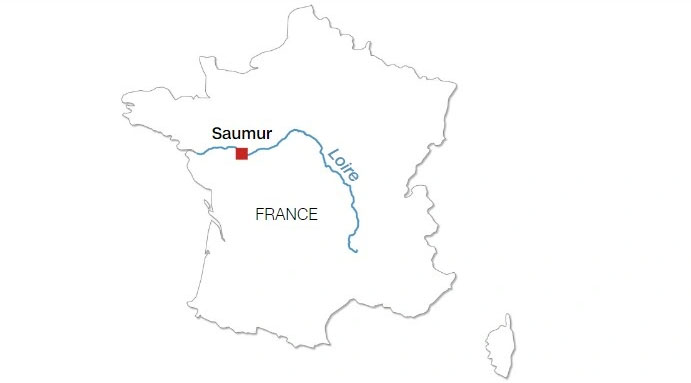
The Loire River in France sustains a valley with vineyards that produce some of the world’s most famous wines.
This river stretches nearly 1,000 km and is considered the last wild river in France, supporting diverse ecosystems throughout the valley, much of which is protected by the United Nations Educational, Scientific and Cultural Organization (UNESCO).
Many stretches of the river are quite shallow, but its water levels and flow can change rapidly with the weather, especially when snow melts at the source. However, some sections have dried up so much that people can walk across them.
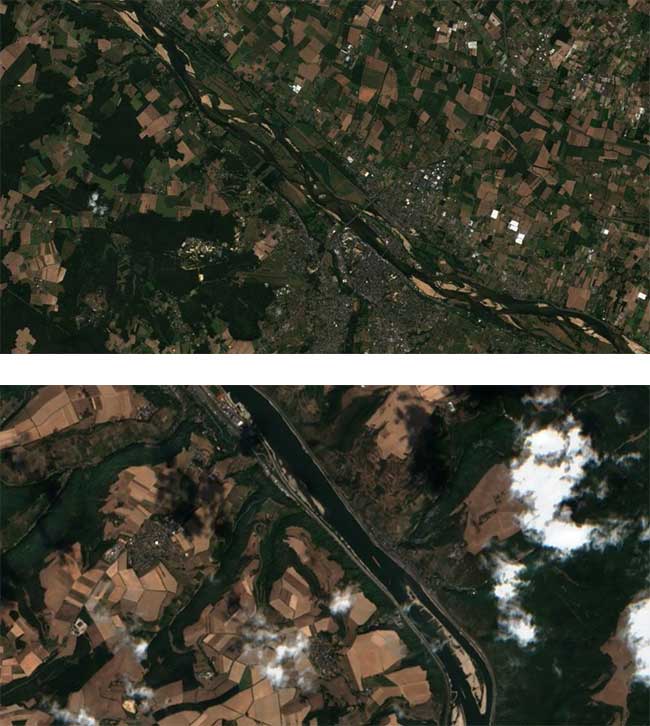
Loire River in 2021 (top) and 2022 (bottom). (Photo: CNN).
Satellite images from the town of Saumur in France show that the land in the valley is mostly brown and barren, whereas a year ago, a lush green covered the area.
Authorities are working to release water from dams into the river, primarily to ensure there is enough water to cool four nuclear power plants along the river.
Danube River
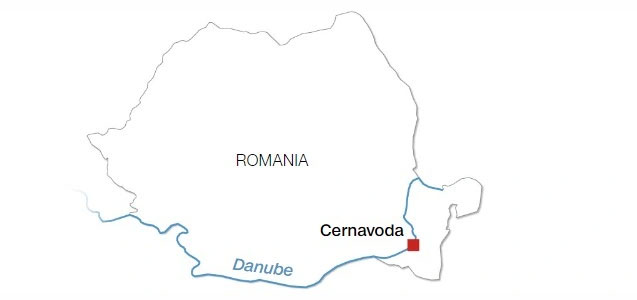
The Danube is the longest river in Western Europe and an important shipping channel that flows through ten countries. In Romania, Serbia, and Bulgaria, workers are dredging the river just to ensure that vessels can still navigate.
While the Danube has not reached the dire state of some other rivers in Europe, countries like Hungary, which rely on Danube tourism, have clearly felt the negative impacts of the declining water levels.
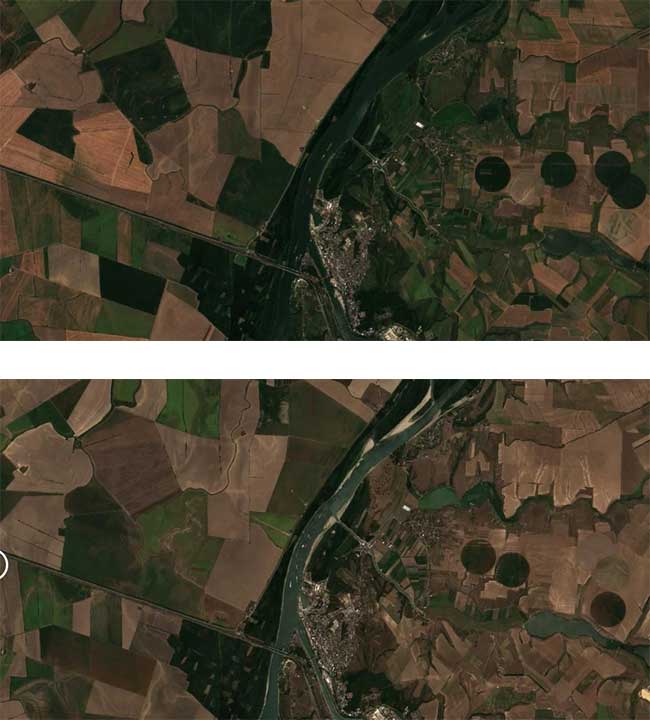
Danube River in 2021 (top) and 2022 (bottom). (Photo: CNN).
Some cruise ships are unable to navigate certain stretches of the river or even reach Hungary. According to the Hungarian Tourism Agency, an average 1,600-ton vessel can now only navigate the river basin in Hungary without cargo.


















































